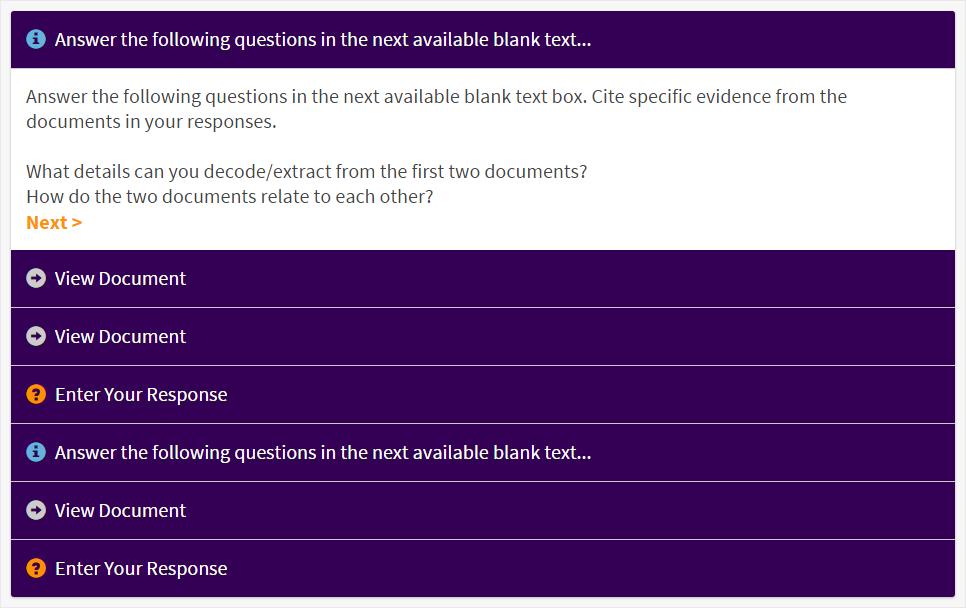In this activity, students will analyze the Zimmermann telegram to determine if the United States should have entered World War I based on the telegram's information and implications.
Suggested Teaching Instructions
This activity can be used during a unit on U.S. involvement in WWI. For grades 6-12, working individually or in small groups, with breaks for class discussion. Approximate time needed is 30 minutes.
Ask students begin the activity and look at the first two documents: the encoded Zimmermann Telegram and the partial Decode Worksheet. They will be directed to look for clues and details about these two documents that may help explain their meaning and answer the questions posed in the activity:
- What details can you decode/extract from the first two documents?
- How do the two documents relate to each other?
Discuss their findings.
On the encoded telegram, students may notice the series of numbers, a specific date, the places Mexico City and Galveston, and the terms German Legation and German Embassy.
On the decode worksheet, students may notice that numbers are associated with specific terms, that many of the terms are in another language (specifically German), and that the places Mexico, Texas, New Mexico, and Arizona are noted.
You may share with students that in January of 1917, British codebreakers deciphered a telegram from German Foreign Minister Arthur Zimmermann to the German Minister to Mexico, Heinrich von Eckhardt; this is known as the Zimmermann telegram.
After the class discussion, direct students to read the next document: the decoded telegram. Students will be asked to identify the author, audience, and purpose.
You may share with students that, in the message, Arthur Zimmermann, the Foreign Secretary of the German Empire, informed the Mexican government that Germany was going to resume unrestricted submarine warfare. Zimmermann also invited Mexico to join the war on Germany's side if the United States did not stay neutral, in an effort to regain Mexico's lost territory of Texas, Arizona, and New Mexico.
Students should click When You're Done to answer the question: Do you think the United States should have entered World War I based on the Zimmermann Telegram alone? Why or why not?
Conduct a class vote on whether or not the United States should have declared war on Germany based solely on the Zimmermann Telegram. Ask students to explain their opinions.
As a class, discuss:
- What other events in 1916 and 1917 would have contributed to the impact the Zimmermann telegram had on the American public?
- Do you think the United States would have remained neutral if the Zimmermann telegram had not been revealed?
Explain to students that the Zimmermann Telegram helped draw the United States into the war and thus changed the course of history. This, along with Germany's resumption of submarine warfare, and other factors led the United States to declare war against Germany in April 1917 and enter World War One.
Share with students that, in an effort to protect their intelligence from detection and to capitalize on growing anti-German sentiment in the United States, the British waited until February 24 to present the telegram to Woodrow Wilson. The American press published news of the telegram on March 1. On April 6, 1917, the United States Congress formally declared war on Germany and its allies.
This activity was adapted from an article published on www.archives.gov/education and in the National Council for the Social Studies (NCSS) publication Social Education
: Alexander, Mary and Marilyn Childress. "The Zimmerman Telegram." Social Education
45, 4 (April 1981): 266.




